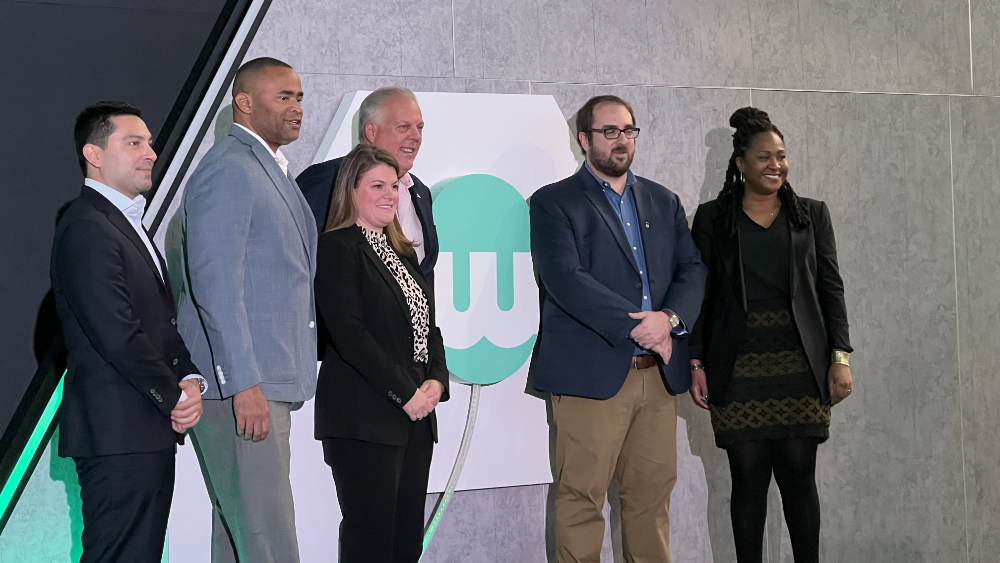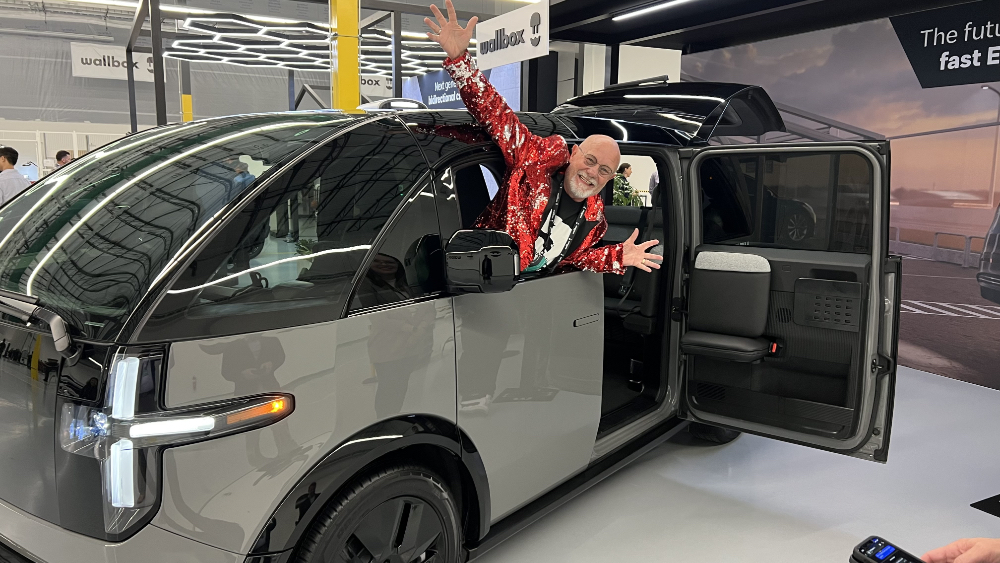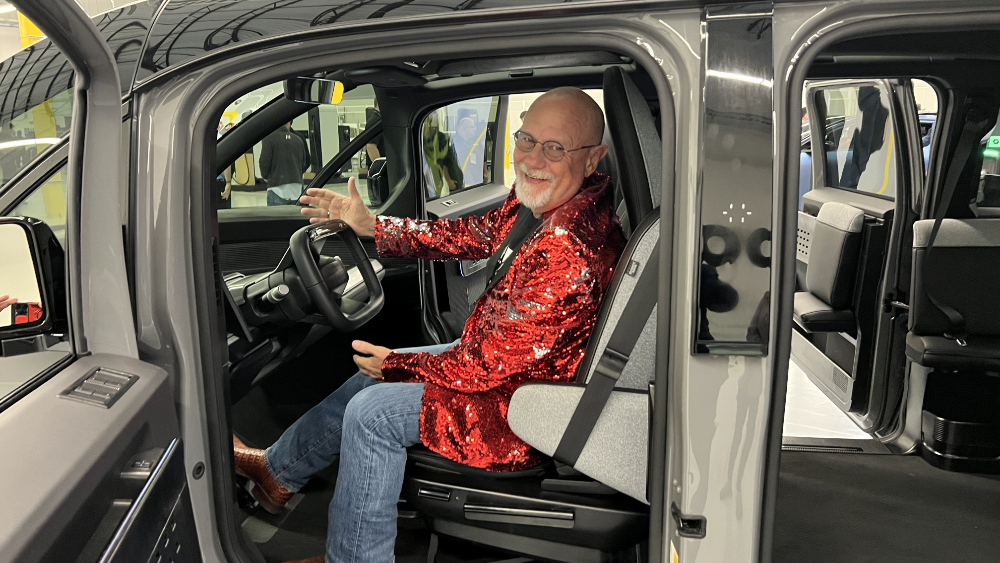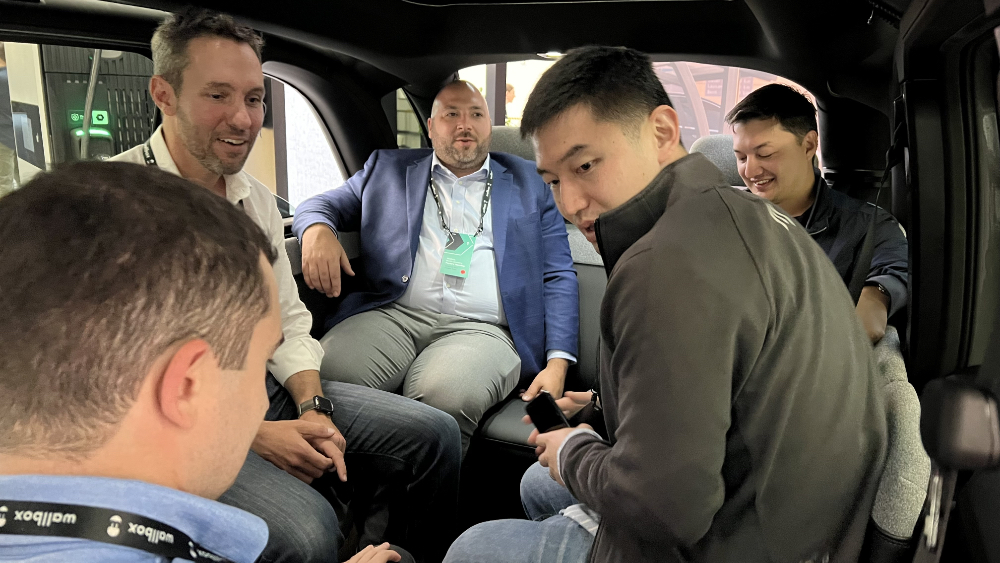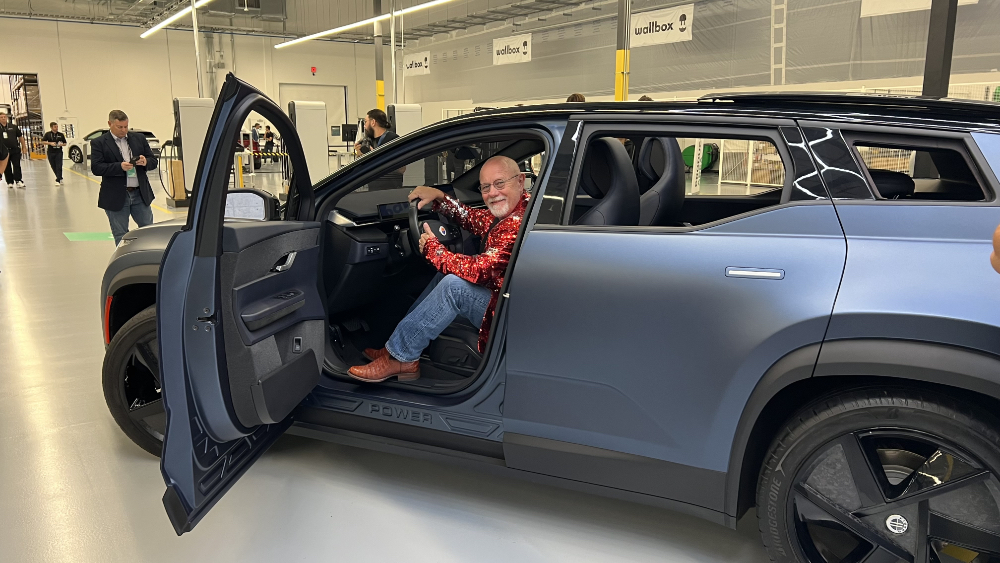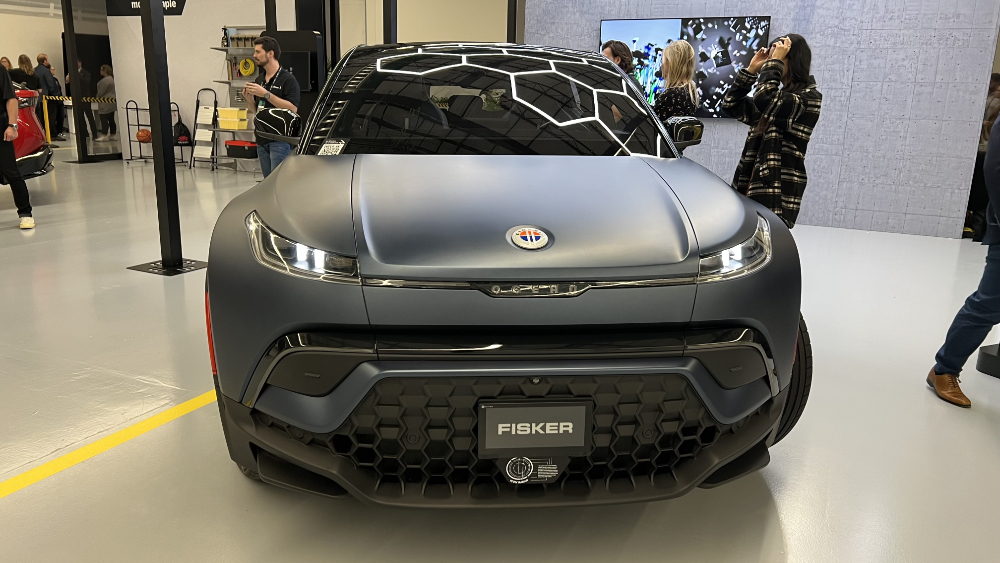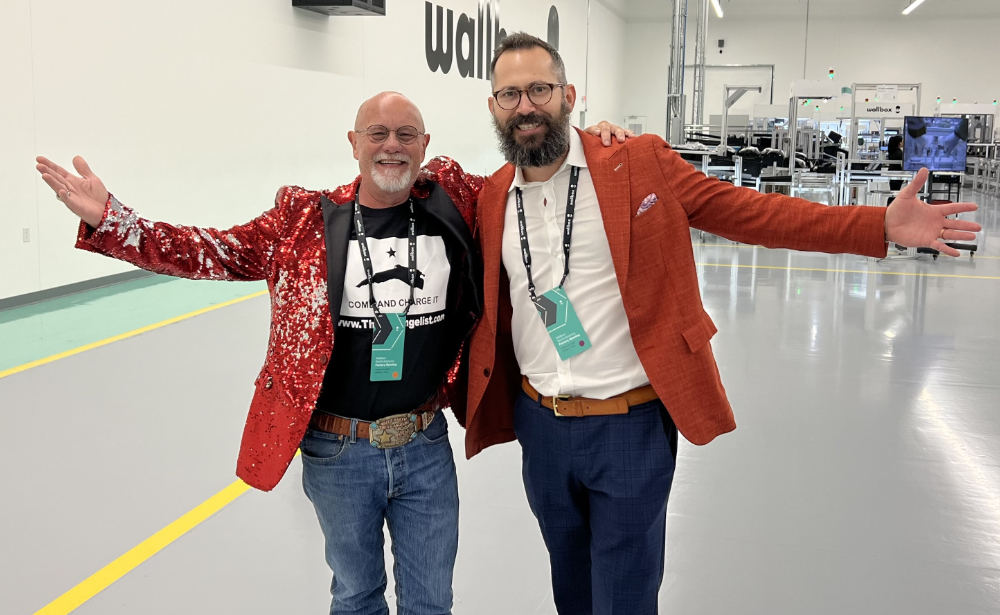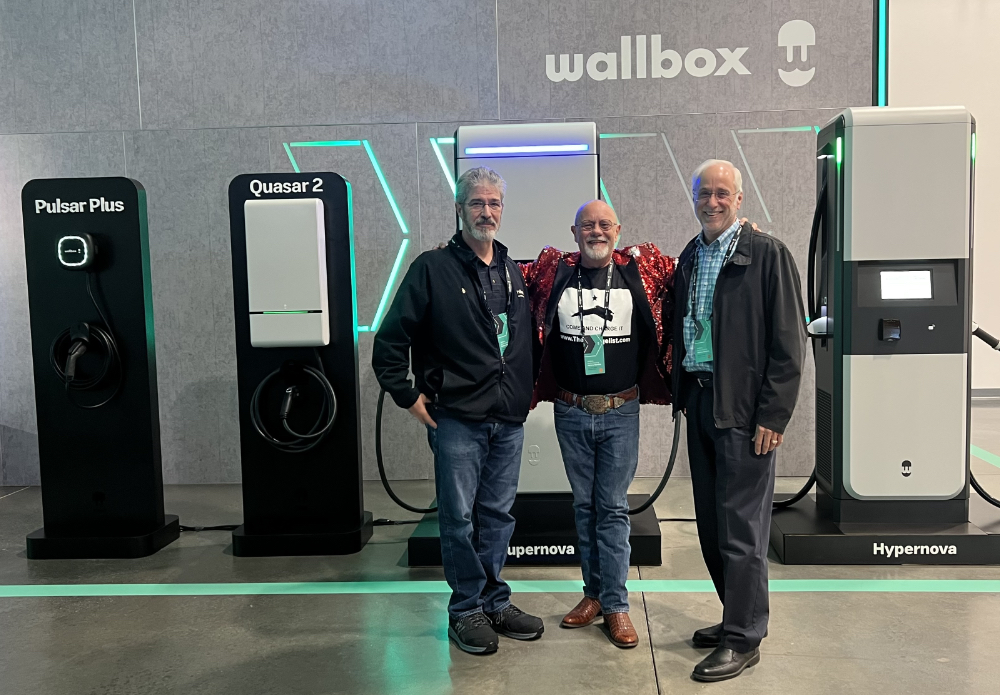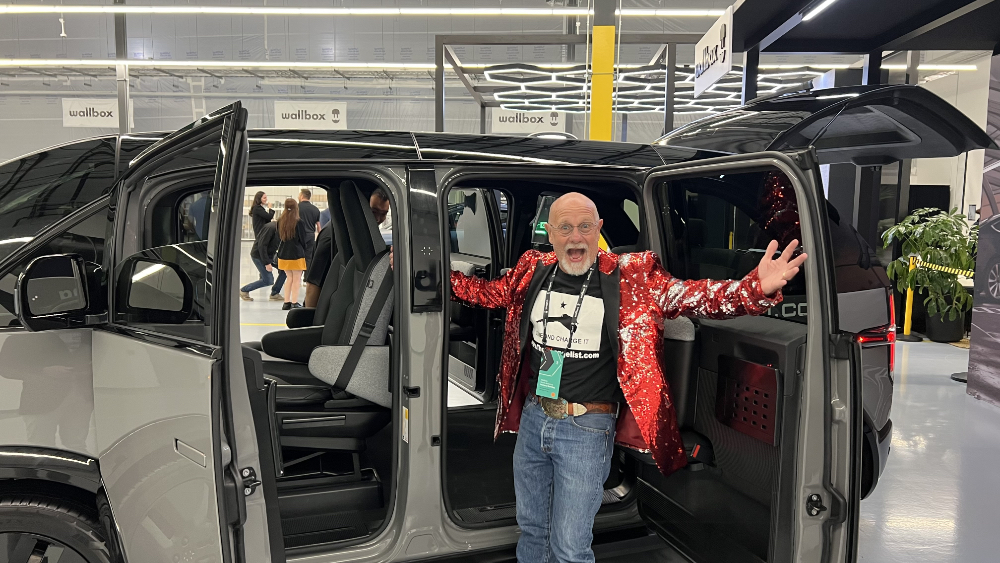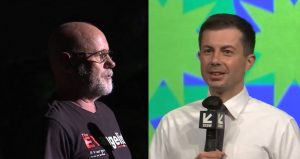I recently saw the new Wallbox Pulsar 2 bidirectional charger at Fully Charged Live, in San Diego (video here). As part of my work with TxETRA, I jumped at the opportunity of attending the opening of their new manufacturing facility in Arlington, Texas. I’m so glad I did!
The tour started with speakers, including company leadership and local politicians. One development I was glad to see, was political leaders touting jobs as well as cleaning up north Texas’ terrible air quality ratings. The political figures attending included:
- Jim Ross, Mayor of Arlington, Texas
- Marc Veasey, member of the U.S. House of Representative, 33rd District of Texas
- Devan Allen, Tarrant County Commissioner, Precinct 2
- Emily Lindley, Commissioner, Texas Commission on Environmental Quality (TCEQ)
Mayor Ross spoke about the local jobs created by the new factory.
Commissioner Lindley mentioned that the Dallas / Fort Worth area currently has an air quality rating of “serious nonattainment” and touted how the electrification of transport will help turn that around.
Wallbox executives spoke of the qualities that resulted in the Dallas / Fort Worth area landing the factory, which included local universities/colleges, the presence of educated, skilled workers, a location central to North America, to support their distribution centers and the ability to get to start of production very quickly, as the market for EV chargers (both residential and NEVI-supported public chargers) is heating up.
The need for skilled workers prompted Wallbox to endow a scholarship at Tarrant County Community College. This was especially impactful for me as I know the North Texas Auto Dealer Association is working on programs for electric vehicle technicians and other groups are working on programs for electricians to become certified in EVSE installation and maintenance.
The facility Wallbox showed off today was an existing building, which accelerated time-to-production from the usual one to two years to just four months! In fact, actual production was going on, while we toured the plant.
Having worked as a manufacturing engineer and consultant for 20+ years, I looked forward to seeing how EV chargers were made. I was not disappointed! The most impressive advance I saw was in manufacturing process instructions. Back when I was in manufacturing, these instructions were mostly textual and printed on paper. What blew my mind was watching an assembly worker looking at a large display screen that showed images of the product being assembled. These images were obviously from the design system they use. The technician could see a yellow dot appear at the location at which a fastener (screw) would be attached. Using a hand held electric torque wrench that was connected to the system, he could automatically tighten the screw to the proper torque. Upon reaching proper torque, the wrench would automatically stop tightening the screw, the yellow dot on the screen would turn green and a new yellow dot would appear at the next fastener location. This assures that no step is accidentally skipped or incorrectly performed. Once the assembly step was completed, a notification of completion was shown on the display and the subassembly was automatically moved, via conveyor, to the next step, which could be another assembly step or assembly/functionality testing and confirmation.
In manufacturing, since there are sequential operations that can result in bottlenecks, requires that management be able to monitor (and to resolve) any snags that occur. At Wallbox, the inventory system is able to look at production requirements, sales projections and even into their supply chain, to make sure they’ll have everything they need to build their chargers, when they need it.
To stay up-to-date on the manufacturing floor, process visibility is handled by electronic dashboards, accessible by Wallbox personnel anywhere they can access their network. These dashboards are like the dashboard warning lights in your car. Each row is a step or variable the company wants to monitor, which included worker attendance. Each row has an attainment value (e.g. attendance greater than 95%) and the values for that steps for each day. If the current value returned from the shop monitoring system falls below the attainment goal, the value turns red, instead of the usual green for attainment. This alerts the responsible support and supervisory personnel that a problem exists so they can resolve the issue. Multiple, sequential days are shown to verify that any task, that was red in the past, turns green to indicate that the fix was successful.
Finally, we viewed the shipping area. Wallbox does not allow “product overhang” on their shipping pallets. The reason for this, they explained, is that forklift operators loading trucks, cannot see the front of their load, so they have a practice of moving forward until they bump into the front wall of the trailer or the previously-loaded pallet. This can result in product damage that would ruin all the planning and monitoring that went on before! Finally, they told us the cardboard for all the boxes is from forests grown specifically for paper pulp harvesting. (There’s an organization and standard for that.) This means their boxes aren’t made from 100 year old trees, but are from trees planted for this purpose. Inside those boxes are spacers to hold the product in place, which are also cardboard instead of styrofoam. All this cardboard can be recycled instead of filling up landfills. Even the design of the spacer is continually being refined. Today, there are multiple pieces of cardboard used as spacers, but the new design will consist of a single piece of cardboard, folded to make a single spacer for the shipment. This will help prevent customers from possibly not seeing a component and accidentally discarding it with the spacer. Having worked for Apple, whose computer boxes (and job offer containers) are elegantly designed, I loved seeing another company focused on the unboxing experience. I’m in the market for another chargers, so if I end up buying a Wallbox Pulsar Plus, I’ll shoot an unboxing video, similar to the video Charles and I created for EGO Power+ equipment (which is also very environmentally friendly). Stay tuned!
So much has changed, since I was in manufacturing, but I was happy to see that things that I had worked on, like instruction plans and execution dashboards, had advanced so far in the interim.
Wallbox’s chargers range from Level 2 residential smart chargers (which have network and smartphone access capabilities) to their amazing 150 kW to 400 kW DC fast chargers. One advancement I loved seeing was the lack of the need for a credit card reader, although they are available. I have been concerned about crooks putting credit card scanners on chargers, since they’re usually unattended, and stealing credit card information. The Wallbox DC fast chargers can scan smartphones, RFID-type credit cards that can just be tapped on the front of the charger or can actually get data from the plugged-in electric vehicle itself, to bill the customer’s credit card!
EV Manufacturers were represented well at the factory, by the presence of their vehicle(s) and/or representatives. I saw the Canoo Lifestyle, Fisker Ocean, Kia EV6, Volkswagen I.D.4 and Tesla Model 3.
This was also a great networking for installers, electric utility personnel, retailers, EV manufacturers, government representatives and yes, social media influencers. Here are some photos from the event. Check out the impromptu meeting held in the back of a Canoo Lifestyle Vehicle (5th photo):



